Abstract
Previous work on flowering suggested that photoperiodism in Lemna perpusilla 6746 involves an endogenous circadian “clock,” but direct evidence requires study of an overt rhythm in the same plant. The CO2 output rate of axenic cultures supplied with sucrose has been studied in a system using infrared analysis and monitoring four sets of cultures at once. Alternations of ¼ to 21 hours of dim red light with darkness in 24-hour cycles can entrain the CO2 output. In darkness following either continuous dim red light or entrainment to a 12(12) light (dark) schedule, the rate oscillates through two maxima and two minima, with a circadian periodicity, before apparently damping. In continuous red light, the rate is linear. The skeleton photoperiodic schedule ¼(5½)¼(18), with its two portions highly unequal, rapidly entrains the CO2 output in a phase relationship which is the same irrespective of which dark period is given first. The schedules ¼(13)¼(10½) and its inverse, however, with two portions more nearly equal in length, differ markedly from each other with respect to manner of entrainment, as they do in their effects on flowering. These and other results strongly support the concept that a circadian clock is an important component of photoperiodism, and they provide a new experimental system in which to study its action.
Full text
PDF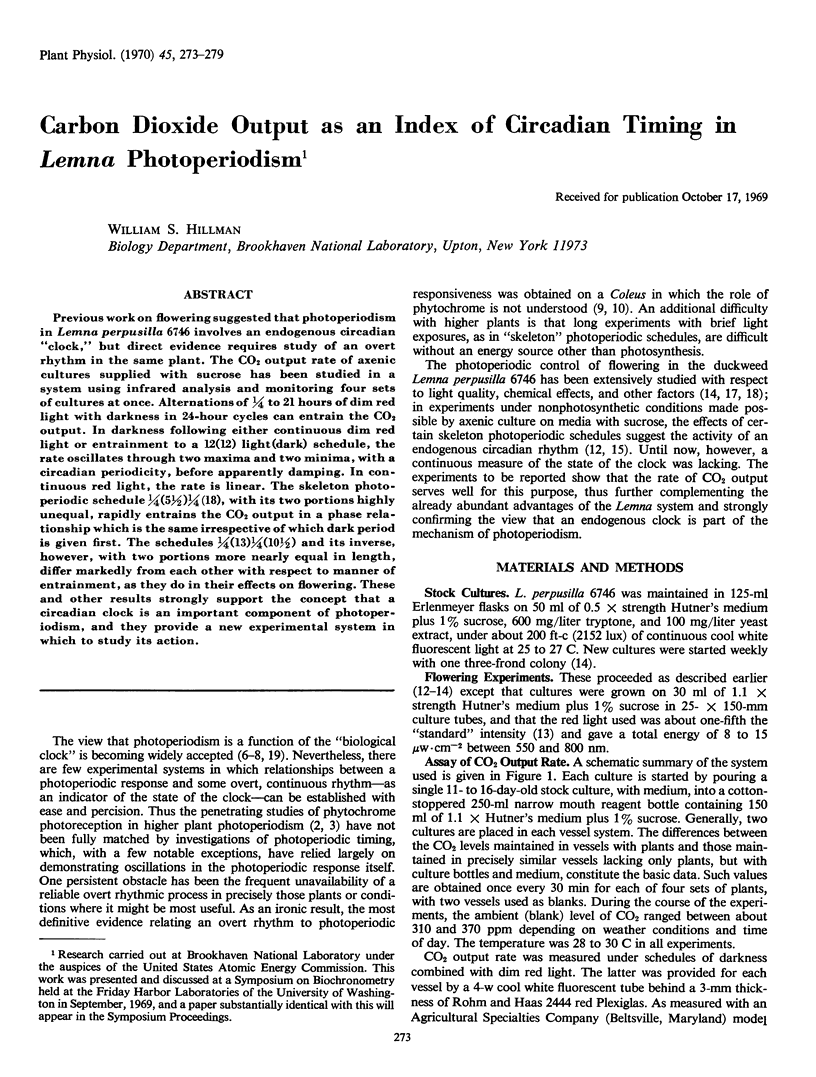
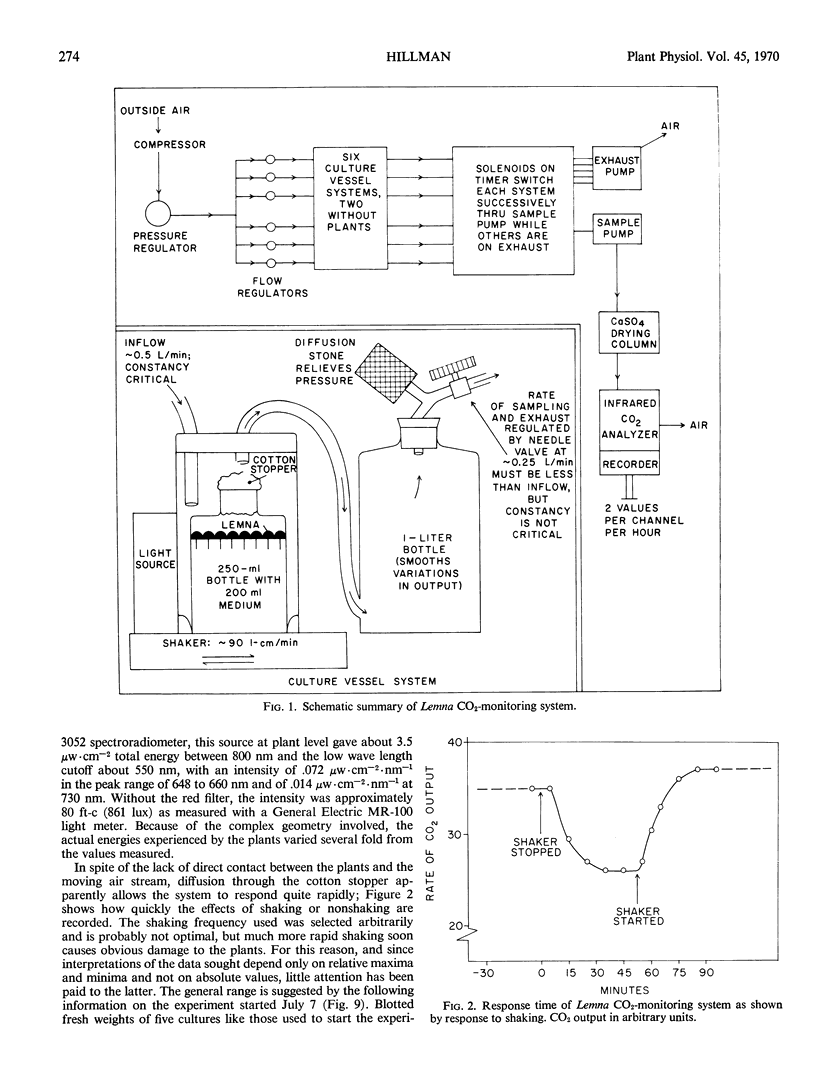
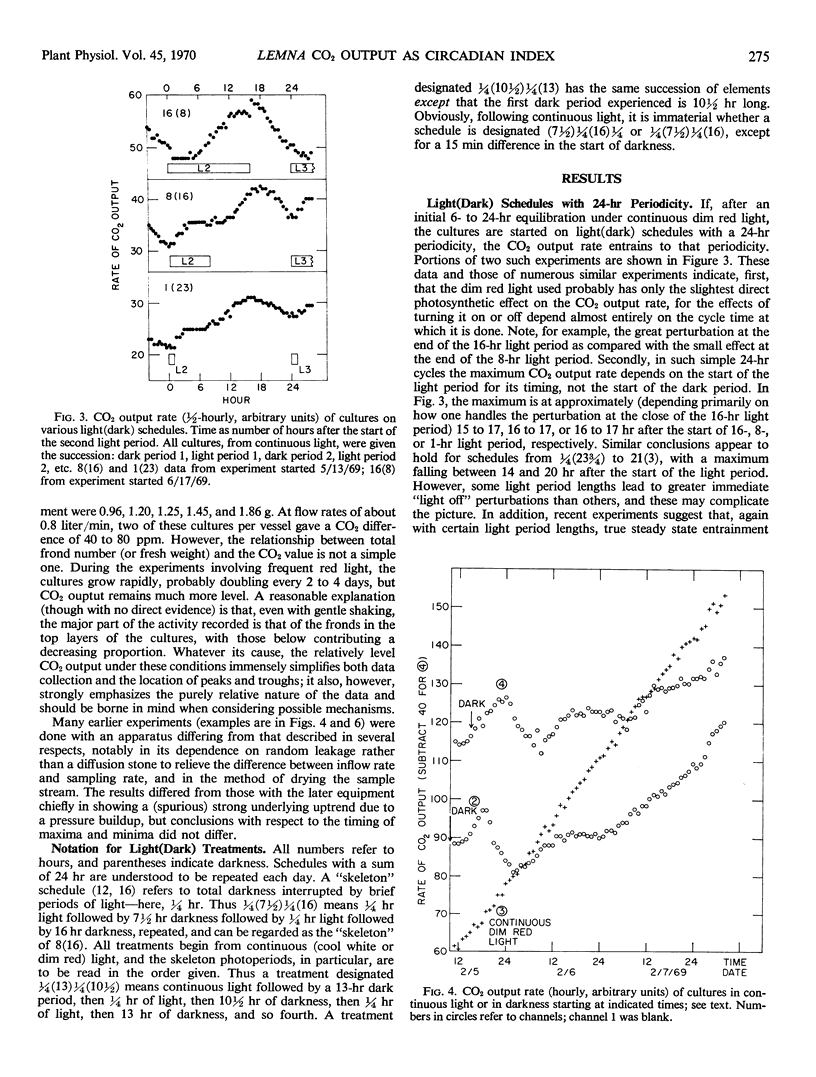
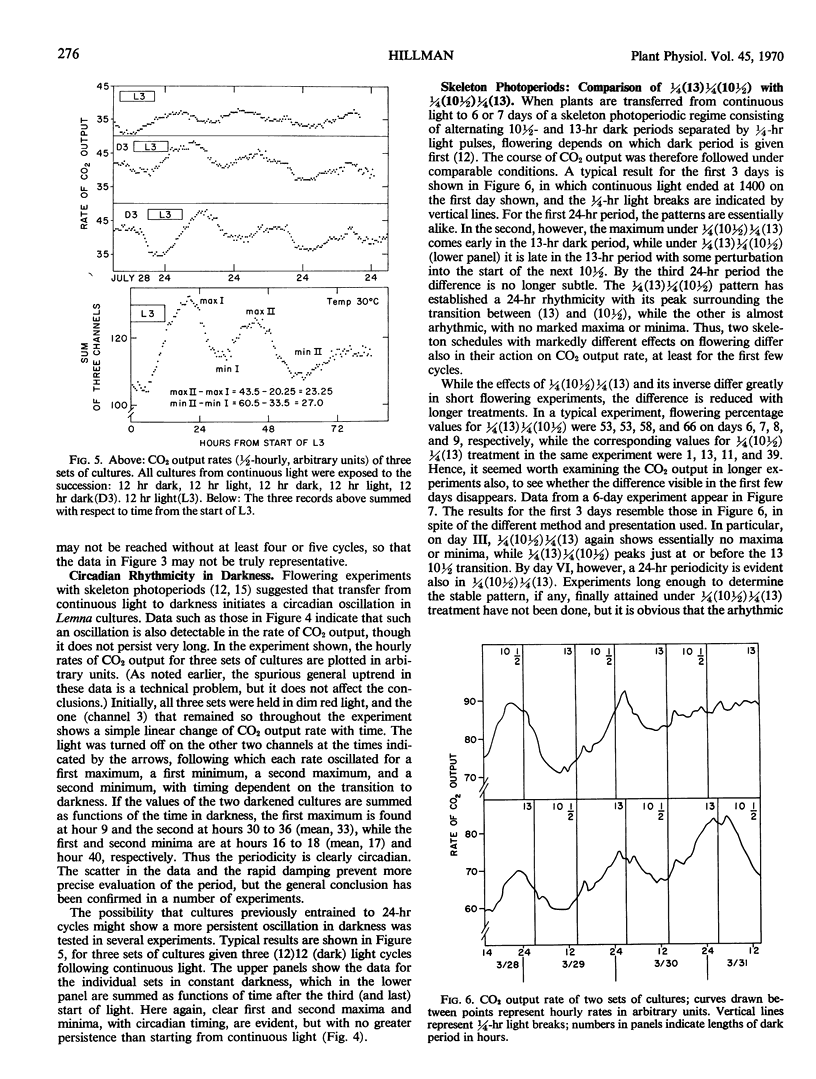
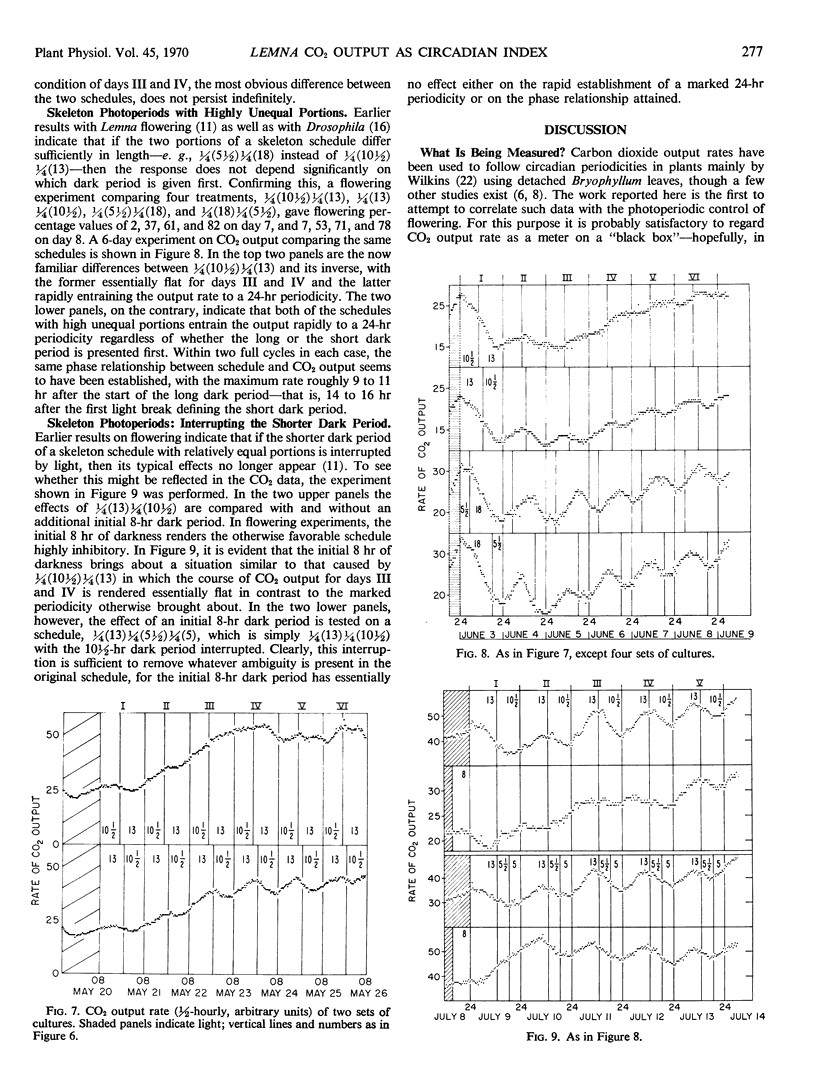
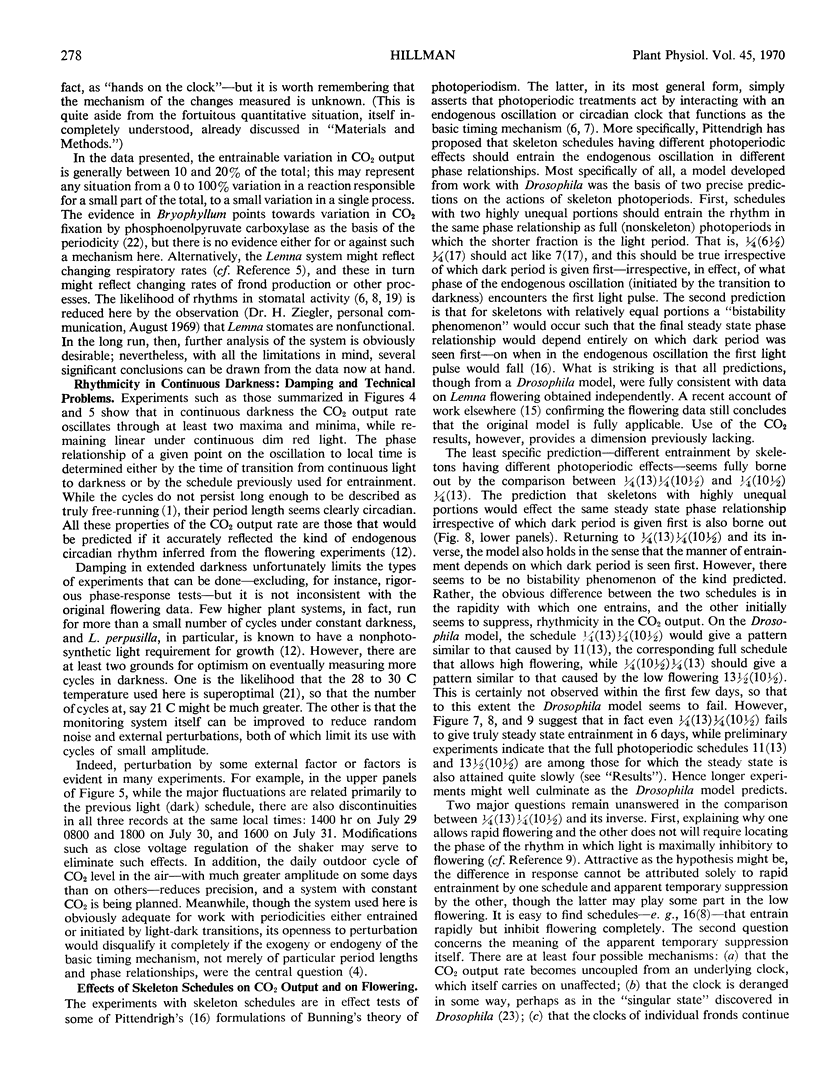
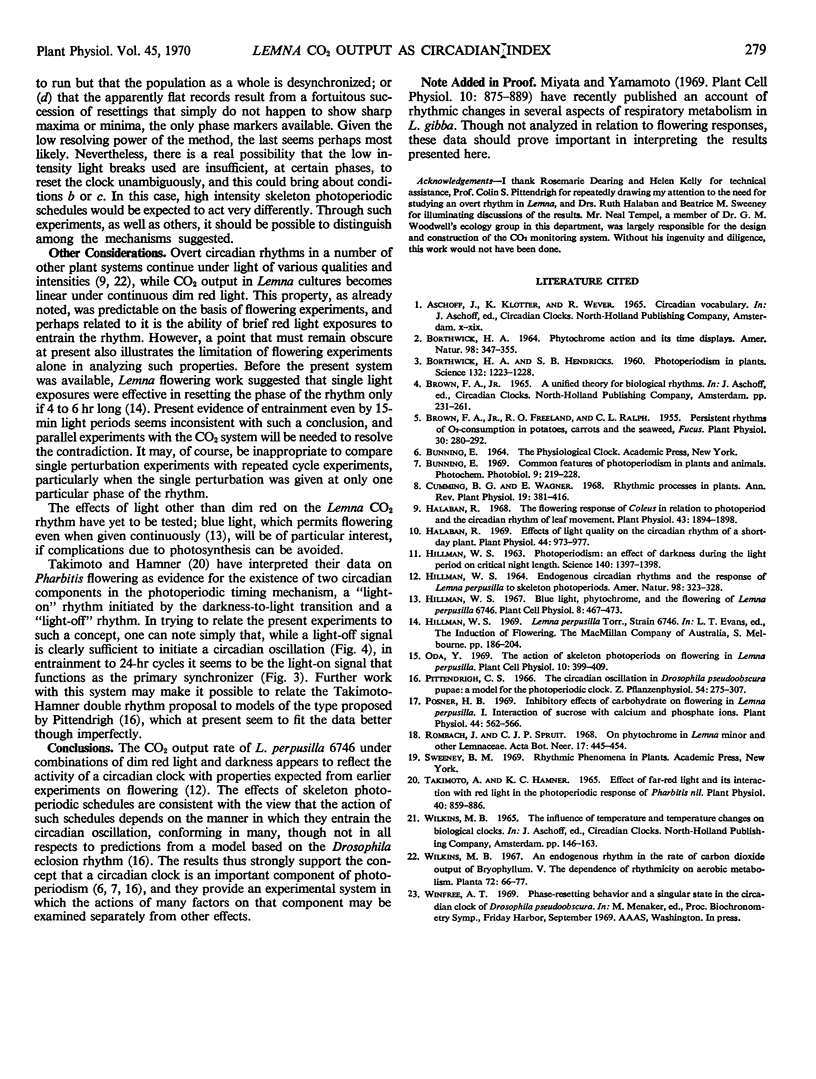
Selected References
These references are in PubMed. This may not be the complete list of references from this article.
- Borthwick H. A., Hendricks S. B. Photoperiodism in Plants. Science. 1960 Oct 28;132(3435):1223–1228. doi: 10.1126/science.132.3435.1223. [DOI] [PubMed] [Google Scholar]
- Brown F. A., Freeland R. O., Ralph C. L. Persistent Rhythms of O(2)-Consumption in Potatoes, Carrots and the Seaweed, Fucus. Plant Physiol. 1955 May;30(3):280–292. doi: 10.1104/pp.30.3.280. [DOI] [PMC free article] [PubMed] [Google Scholar]
- Halaban R. Effects of light quality on the circadian rhythm of leaf movement of a short-day-plant. Plant Physiol. 1969 Jul;44(7):973–977. doi: 10.1104/pp.44.7.973. [DOI] [PMC free article] [PubMed] [Google Scholar]
- Halaban R. The flowering response of coleus in relation to photoperiod and the circadian rhythm of leaf movement. Plant Physiol. 1968 Dec;43(12):1894–1898. doi: 10.1104/pp.43.12.1894. [DOI] [PMC free article] [PubMed] [Google Scholar]
- Hillman W. S. Photoperiodism: An Effect of Darkness during the Light Period on Critical Night Length. Science. 1963 Jun 28;140(3574):1397–1398. doi: 10.1126/science.140.3574.1397. [DOI] [PubMed] [Google Scholar]
- Posner H. B. Inhibitory Effect of Carbohydrate on Flowering in Lemna perpusilla. I. Interaction of Sucrose With Calcium and Phosphate Ions. Plant Physiol. 1969 Apr;44(4):562–566. doi: 10.1104/pp.44.4.562. [DOI] [PMC free article] [PubMed] [Google Scholar]
- Takimoto A., Hamner K. C. Effect of Far-Red Light and its Interaction with Red Light in the Photoperiodic Response of Pharbitis nil. Plant Physiol. 1965 Sep;40(5):859–864. doi: 10.1104/pp.40.5.859. [DOI] [PMC free article] [PubMed] [Google Scholar]


